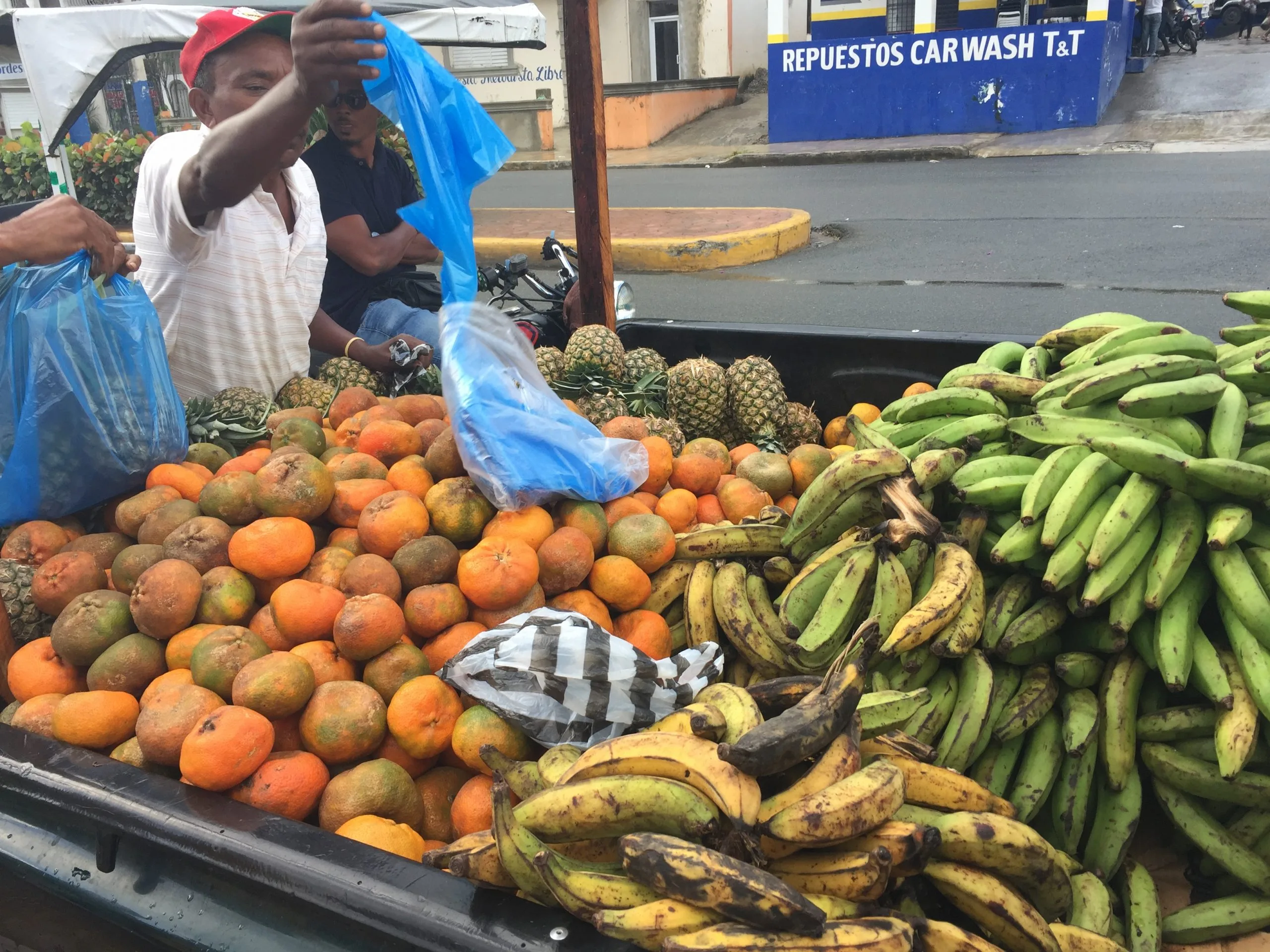News
Dominican Republic Foodways

Ship’s Log
Current Location
019° 11.5’ N x 069° 19.8’ W
Ship’s Heading and Speed
At Anchor in Samaná Bay, DR in 40ft of water
One of the most exciting things about coming into a new port is stepping out into a new culture and sampling new food traditions. Aboard Cramer, we have so far stuck to foods that are fairly familiar to our students. American staples like spaghetti, chocolate chip cookies, and chicken breast are easy transition foods for stomachs unused to rough weather and high seas. As we get further into the trip, however, it’s fun to start exploring the foods of the countries we visit, as well as have students bring their own food traditions into the galley.
As steward, I oversee the daily menu planning as well as the provisioning of food aboard ship for the entire cruise track. Every day, I have a student assistant, who provides me with inspiration for the meals we’ll make that day. I encourage the students and staff to bring their family and cultural traditions to the table, and especially for those from the Caribbean, this has been a great way for them to explore their heritage while making tasty food for the ship’s crew. We’ve hand-rolled empanada dough discs, sautéed green pigeon peas, and fried up a very large side of plantain chips, all traditional Caribbean staples.
Samaná provided a good place to restock on perishable foods such as leafy greens, meats, and fruits. As a seaside rural town, it was a great showcase for Abby and Teahelahn , two of our students who are studying Caribbean foods. MJ Fernandez, our Dominican TA, acted as our guide to the local morning market, where we found lettuce, herbs, eggplants, tomatoes, and other vegetables grown on the island and trucked in every morning for sale. Just outside the market was a butcher stall, where slabs of pork and beef hung from hooks, waiting for someone to order a fresh rack of ribs, which were then sliced off with a machete. The local supermarket was also an interesting visit, as we got to see what were considered staple foods in DR, including evaporated milk, tubes of salami, and local coffee and vanilla. We also picked up some yucca, a starchy root prepared similarly to potatoes.
As mopeds and trucks laden with pineapples whizzed around us, we hopped from stall to stall, filling up our reusable grocery bags to take back to the ship. Our last stop, a small convenience store just outside the vegetable market, boasted an “exotics” aisle. There, we found small packages of mac ‘n cheese, Doritos, and American candy. It turns out that one culture’s food traditions are another one’s exciting new discovery.
– Ger Tysk, Steward